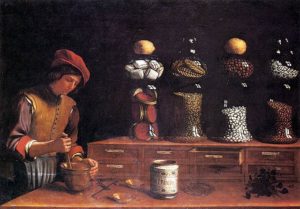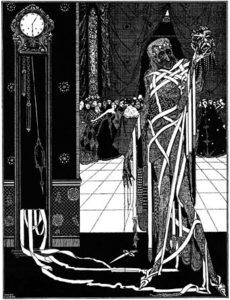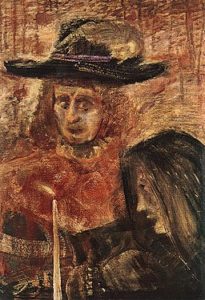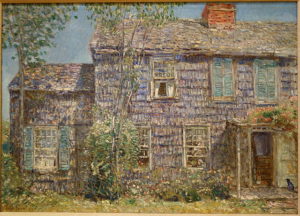
For sale: one chest of drawers
(slightly used) of corpses
some drawers stick
some full of hands,
full of heads empty of thought
some chest of drawers
of chests
For sale: the buttons
once kept in that chest emptied to make room
now used by surgeons
to button your plastic together
(mint condition) action figure
posed to attract buyers
who pass hurriedly assuming
that you’re another mannequin
for sale,
more interested in the clothes
on your frame
than in your frame itself
For sale. Dolls, many varieties;
life-like screaming excreting,
IV marionette, paper
with nurse outfit,
CPR dummy, mouths agape.
For sale: used books,
used up. Words no longer function.
Cheap.
For sale: one music box
Gears in good working order (see)
as one turns over in gurney
the beeps and blips change tempo
the song box rings out its finale
with bells of mourning
For sale: bells
For sale: bells
For sale: bells
illustration is the Spice Shop by Paulo Barbieri, 1637



